Cover design: David Riedy
Cover illustrations: (front and back) Courtesy of Alexander C. Schreyer
This book is printed on acid-free paper.
copyright 2013 by John Wiley & Sons, Inc. All rights reserved.
Published by John Wiley & Sons, Inc., Hoboken, New Jersey.
Published simultaneously in Canada.
No part of this publication may be reproduced, stored in a retrieval system, or transmitted in any form or by any means, electronic, mechanical, photocopying, recording, scanning, or otherwise, except as permitted under Section 107 or 108 of the 1976 United States copyright Act, without either the prior written permission of the Publisher, or authorization through payment of the appropriate per-copy fee to the copyright Clearance Center, Inc., 222 Rosewood Drive, Danvers, MA 01923, 978-750-8400, fax 978-646-8600, or on the web at www.copyright.com . Requests to the Publisher for permission should be addressed to the Permissions Department, John Wiley & Sons, Inc., 111 River Street, Hoboken, NJ 07030, 201-748-6011, fax 201-748-6008, or online at www.wiley.com/go/permissions .
Limit of Liability/Disclaimer of Warranty: While the publisher and author have used their best efforts in preparing this book, they make no representations or warranties with respect to the accuracy or completeness of the contents of this book and specifically disclaim any implied warranties of merchantability or fitness for a particular purpose. No warranty may be created or extended by sales representatives or written sales materials. The advice and strategies contained herein may not be suitable for your situation. You should consult with a professional where appropriate. Neither the publisher nor the author shall be liable for damages arising herefrom.
For general information on our other products and services, or technical support, please contact our Customer Care Department within the United States at 800-762-2974, outside the United States at 317-572-3993 or fax 317-572-4002.
Wiley publishes in a variety of print and electronic formats and by print-on-demand. Some material included with standard print versions of this book may not be included in e-books or in print-on-demand. If this book refers to media such as a CD or DVD that is not included in the version you purchased, you may download this material at http://booksupport.wiley.com . For more information about Wiley products, visit our Web site at www.wiley.com.
Library of Congress Cataloging-in-Publication Data:
Schreyer, Alexander (Alexander C.)
Architectural Design with SketchUp: Component-based modeling, plugins, rendering, and scripting / Alexander Schreyer. p. cm. Includes index. ISBN 978-1-118-12309-6 (pbk.), ISBN 978-1-118-37652-2 (ebk.); ISBN 978-1-118-37654-6 (ebk.); ISBN 978-1-118-38596-8 (ebk.); ISBN 978-1-118-38597-5 (ebk.); ISBN 978-1-118-38598-2 (ebk.); ISBN 978-1-118-56787-6 (ebk.); ISBN 978-1-118-56776-0 (ebk.) 1. Computer graphics. 2. SketchUp. 3. Three-dimensional display systems. 4. Engineering graphics. I. Title. T385.S3347 2013 006.68dc23 2012007297
Printed in the United States of America
10 9 8 7 6 5 4 3 2 1
For my father, Gerhard
Acknowledgments
Having taught SketchUp to varied audiences of eager students, I should start my acknowledgments with exactly those students whose many questions and creative ideas have inspired me not only to look deeper into the software, but also to put this text down on paper. Keep pushing the boundaries of the third dimension in your work!
An amazing product can often be judged by the community that develops around it. SketchUp has always been a small, yet transformative piece of software, whose simplicity and power have enthralled users for many years. This has created a large user community, which in forums, blogs, at user meetings, and other venues hasoften passionatelytaken to using it to design whatever came to their creative minds and educating others in how to use it to realize their ideas. I would like to hereby acknowledge that community for its devotion, support and inventiveness, and am with this book paying forward any support they ever gave me.
Among the makers of SketchUp I would like to foremost thank SketchUp product manager John Bacus and product evangelist Aidan Chopra for their feedback whenever I had a request and of course for the great time I had in Boulder .
This book would not have been possible without the support and feedback from acquisitions editor Paul Drougas at John Wiley & Sons. This being my first book endeavor, I am still in awe of the amount of work that the editorial team puts into a publication like this. In particular, I would like to acknowledge production editor Nancy Cintrons tireless suggestions of edits and revisions as well as copyeditor Ginny Carrolls and editorial assistant Mike News help in this process. Judging by the editing initials in the manuscript, it passed through many more hands whose anonymous work I hereby gratefully acknowledge.
Finallyand most importantlyI would like to thank the love of my life, my wonderful wife Peggi, and our two girls, Sophia and Mackenzie, for their love, tremendous encouragement, and support, as well as their patience with me while I was preparing the manuscript. I couldnt have done it without them! They are, together with my mother and my brother, the source of all my strength and joy.
Chapter 1
Introduction
In my years of teaching SketchUp, as well as other Computer-Aided Design (CAD) and Building Information Modeling (BIM) software, I have seen very proficient users of this software. Students and professionals take easily to SketchUp, and, before long, some of them produce very detailed building models and professional-grade renderings. But I have also found that too many people dont go beyond the basics and believe that some of the advanced modeling (or good-quality photorealistic rendering) needs to be done using other software. Very often, they painstakingly pick up that other software only to find that it is too complex, which likewise leaves them unable to do what they wanted.
Sometimes even advanced users of SketchUp master one aspect of the software (photorealistic rendering, for example) but are completely unaware of the power that SketchUp holds in other areasDynamic Components and Ruby scripting are good examples. As you will find out in this book, SketchUp is a very powerful design and 3D modeling tool. Some of its core featuresfor example, its extendibility with pluginsmake it flexible enough to be useful for a variety of disciplines. The large number of high-quality plugins that are available for SketchUp these days bears powerful witness to this.
This book attempts to help the basic to intermediate user make the leap from simply creating something in SketchUp to using it as a powerful design tool. While it contains some more involved topics (such as photorealistic rendering, Dynamic Components, and Ruby scripting), it provides a clear learning path that takes you through easy-to-follow examples to a thorough understanding of the core topics. shows an example of how one could use Ruby scripting to create geometry, then render the scene using a photorealistic rendering software and finally dress-up the image as a watercolor painting.
About This Book
Each chapter in this book presents a different SketchUp use in sufficient detail to get you started and working quickly. Interspersed with the text are many step-by-step examples, tips, and in-depth articles. At the end of each chapter, you will also find a collection of activities that you can undertake to try out new skills that you just learned.


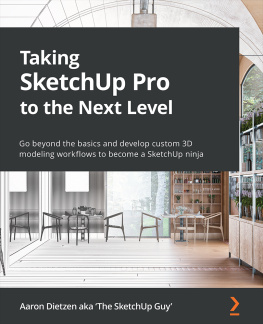

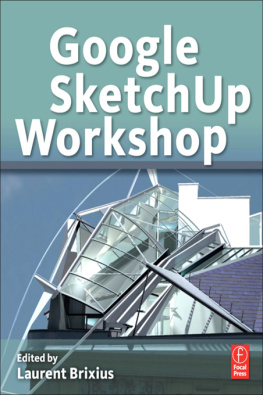
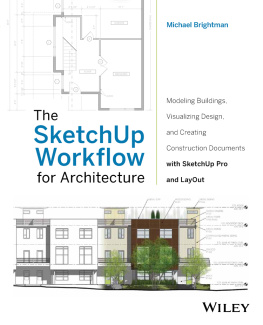
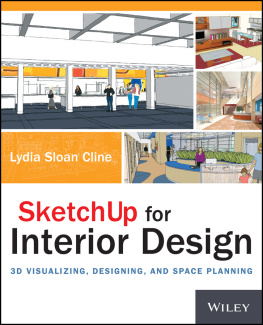
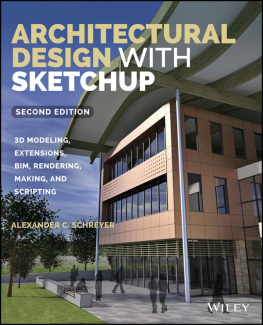


![Robin de Jongh [Robin de Jongh] - Google SketchUp for Game Design](/uploads/posts/book/119411/thumbs/robin-de-jongh-robin-de-jongh-google-sketchup.jpg)


